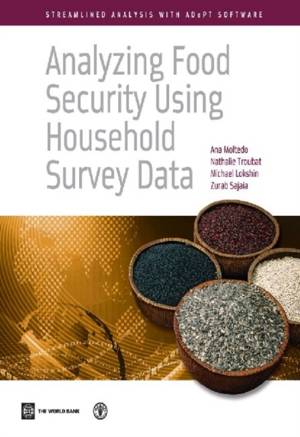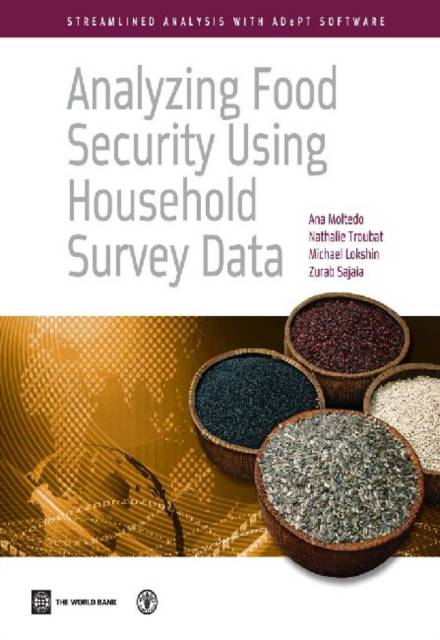
- Retrait gratuit dans votre magasin Club
- 7.000.000 titres dans notre catalogue
- Payer en toute sécurité
- Toujours un magasin près de chez vous
- Retrait gratuit dans votre magasin Club
- 7.000.0000 titres dans notre catalogue
- Payer en toute sécurité
- Toujours un magasin près de chez vous
Analyzing Food Security Using Household Survey Data
Streamlined Analysis with Adept Software
Ana Moltedo, World Bank
34,45 €
+ 68 points
Description
"Since the end of the Second World War, the international community has been focusing on reducing the number and the proportion of people who suffer from hunger. Over time it became clear that no single indicator would provide a comprehensive picture of the food security situation. Rather, a suite of indicators is necessary to describe food insecurity in all its dimensions. The demand for evidence-based policies, which brings together providers such as statistical offices and users of food security indicators including policy makers and researchers, has also been increasing. The stand-alone software, ADePT-Food Security Module (available for free downloading), was developed to produce food security indicators from food consumption data collected in household surveys. These indicators, derived at the national and subnational levels, include the consumption of calories and macronutrients, the availability of micronutrients and amino acids, the distribution of calories and the proportion of people undernourished. The book focuses on the theory, methodology, and analysis of these indicators. It has five chapters beginning with a brief overview on concepts of food security. The theory and methodology are further described in the following chapter. To help users with the interpretation of the results some examples are given in chapter 3. Chapter 4 of the book provides guidelines for the preparation of the input datasets. Finally, chapter 5 explains how to use the software. Both the software and this book are products of decades of experience in analyzing food security. This project was made possible through collaboration between FAO and the World Bank, with financial support from the European Union."
Spécifications
Parties prenantes
- Auteur(s) :
- Editeur:
Contenu
- Nombre de pages :
- 264
- Langue:
- Anglais
- Collection :
Caractéristiques
- EAN:
- 9781464801334
- Date de parution :
- 22-04-14
- Format:
- Livre broché
- Format numérique:
- Trade paperback (VS)
- Dimensions :
- 190 mm x 231 mm
- Poids :
- 566 g

Les avis
Nous publions uniquement les avis qui respectent les conditions requises. Consultez nos conditions pour les avis.






